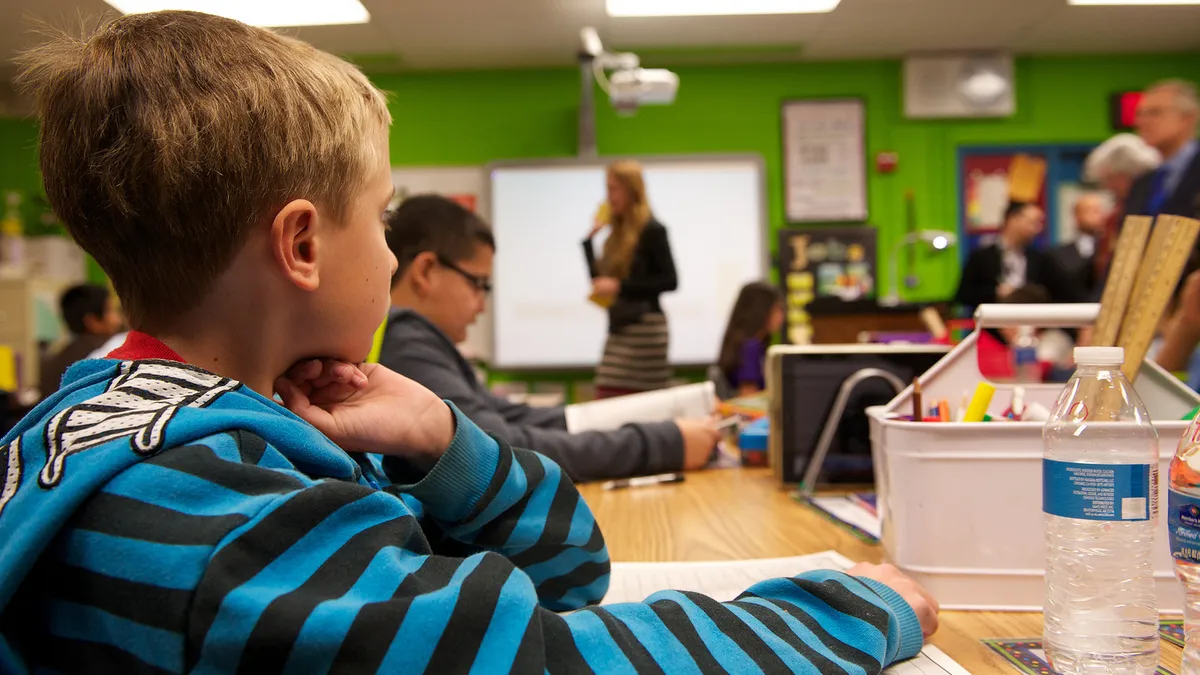One in eight students in California receives special education services, but the state’s schools are often “ill-equipped” to serve them, and funding for students with disabilities has not “kept pace with district costs,” according to a collection of research papers released Tuesday by Policy Analysis for California Education.
In California, only about a third of young children receive developmental screenings, the state has a lower rate of including students with disabilities in regular classrooms than other states, the shortage of special education teachers is “acute,” and many general education teachers feel unprepared to serve special education students in their classrooms.
“These challenges have made special education an urgent priority for policy and practice in California,” wrote Jeannie Myung, director of policy research at PACE, and Heather Hough, PACE’s executive director.
The collection of papers comes as California Gov. Gavin Newsom has proposed a $900 million increase in funding for special education. On Friday, the state’s Department of Finance released "trailer bill" language that explains the governor’s plan to increase the base funding formula for special education students. His plan also includes $250 million for preschoolers with special needs, $600,000 to study accountability for special education and $4 million for dyslexia research.
The PACE reports note when the state enacted its Local Control Funding Formula in 2013 — which provides districts with additional funding for English learners, low-income students and students in foster care — special education students weren’t part of the formula.
California has seen an increase in the percentage of students identified with disabilities, from 10.3% in the 2014-15 school year to 11.7% in 2018-19, with much of the increase due to autism-spectrum diagnoses, the researchers wrote. But for multiple years, the state has been found to be out of compliance with the Individuals with Disabilities Education Act, and students with disabilities trail students overall on outcomes such as attendance, suspension rates and college and career readiness, according to the papers.
The number of due process complaints from parents over special education issues is also three times the national average, the researchers found.
Revamping special education funding is also a high priority for Los Angeles Unified School District Superintendent Austin Beutner and other superintendents across the state. During a recent talk at the University of California Los Angeles, he said because the state funds by enrollment, not “by need,” LAUSD, which serves twice the state average of students with moderate-to-severe disabilities, has “unreimbursed costs.”
Beutner will also discuss special education funding this week at California State University Northridge. “Our advocacy will be focused on the state budget process to ensure targeted funding for students with moderate-to-severe disabilities is included,” said LAUSD spokeswoman Shannon Haber.
Interagency collaboration recommended
The PACE papers also note California ranks behind most states in providing students with mental health services at school.
“Students with disabilities are often simultaneously entitled to services from multiple child-serving systems, and yet students and families are frequently unable to access the support they need when they need it,” the authors wrote.
Voters in California approved Proposition 63 in 2004 to fund mental health services, but the funds go to county behavioral health departments, not schools. Beutner is also pushing for greater collaboration with other agencies to serve students who have mental health needs — a model that exists in many community schools.
“Think of the school as the place where the service is provided,” he said.
Last year, the Los Angeles County Board of Supervisors approved $17.4 million for mental health services in schools, with more than half going to LAUSD. The district is also participating in a pilot program to provide school-based mental health services.
The researchers recommend:
- All teachers receive training in “high-incidence disabilities,” such as learning disabilities and behavioral or social problems.
- Call for greater implementation of “multi-tiered systems of support” — a term for delivering universal instruction and support for all students and then moving to more targeted, one-on-one services depending on students’ needs. They highlight Florida as an example of enacting policies that aim to create more positive views among educators toward inclusion.
- More attention to transitions — for preschoolers with special needs entering kindergarten and for older students moving into higher education or the workforce.
“While California has a historically low unemployment rate of 4%, individuals with disabilities continue to lag behind individuals without disabilities with an unemployment rate of 13%," the researchers wrote. “The high unemployment rate for individuals with disabilities is compounded by their lack of workforce preparation in school.”
Along with interagency collaboration, the researchers recommend the development of data systems to better track students once they are identified with a special need and “how well they progress through different systems.”














